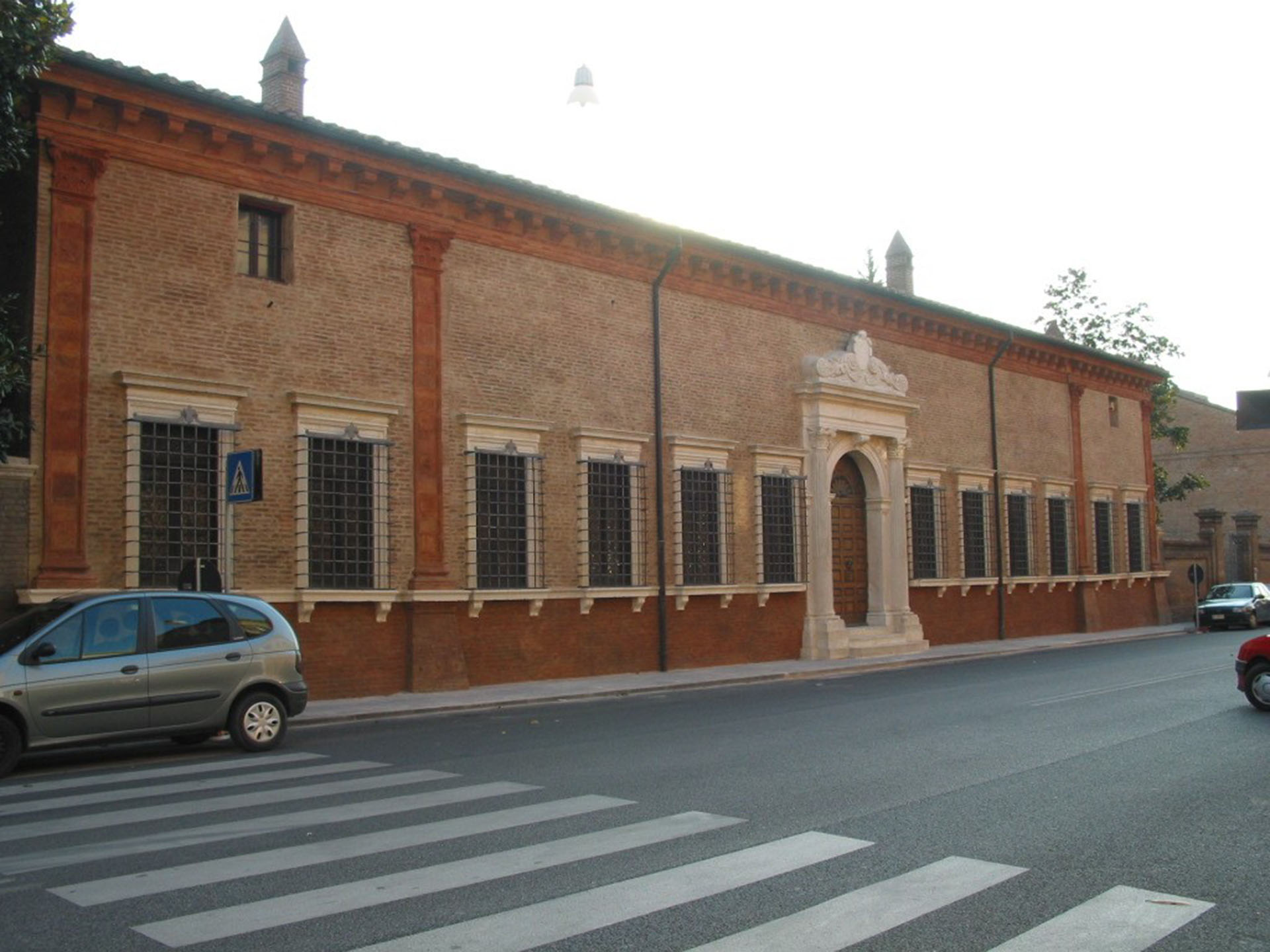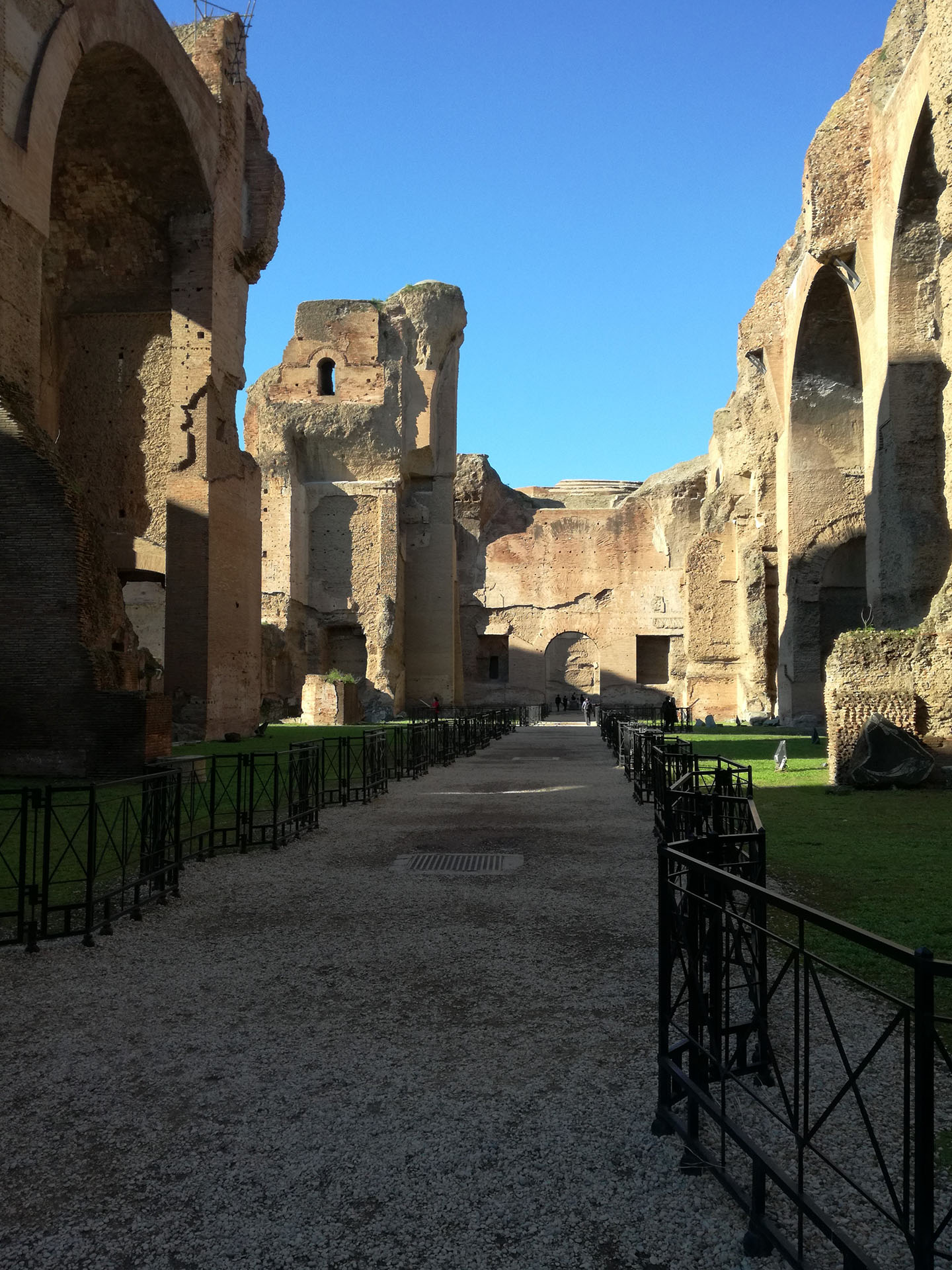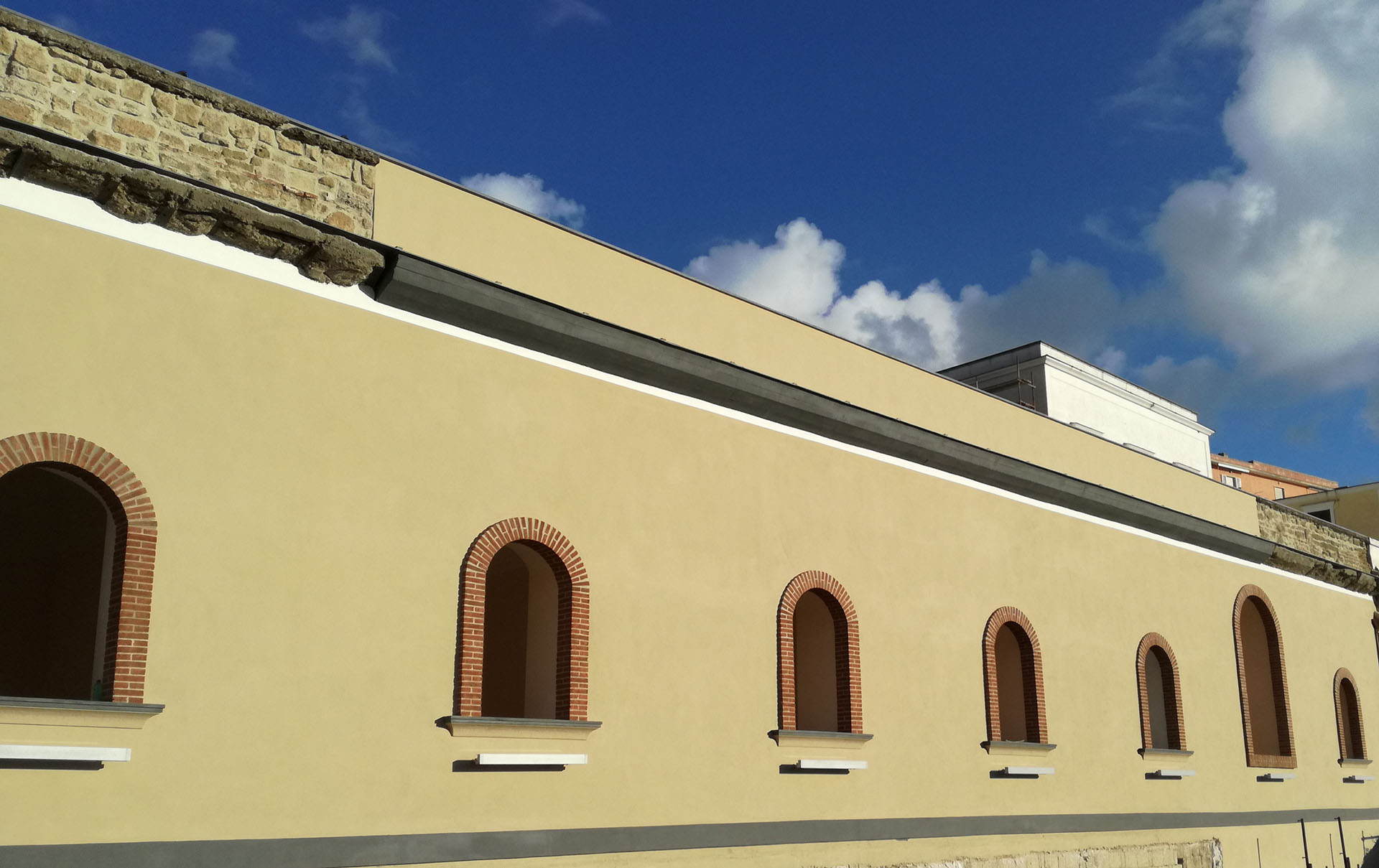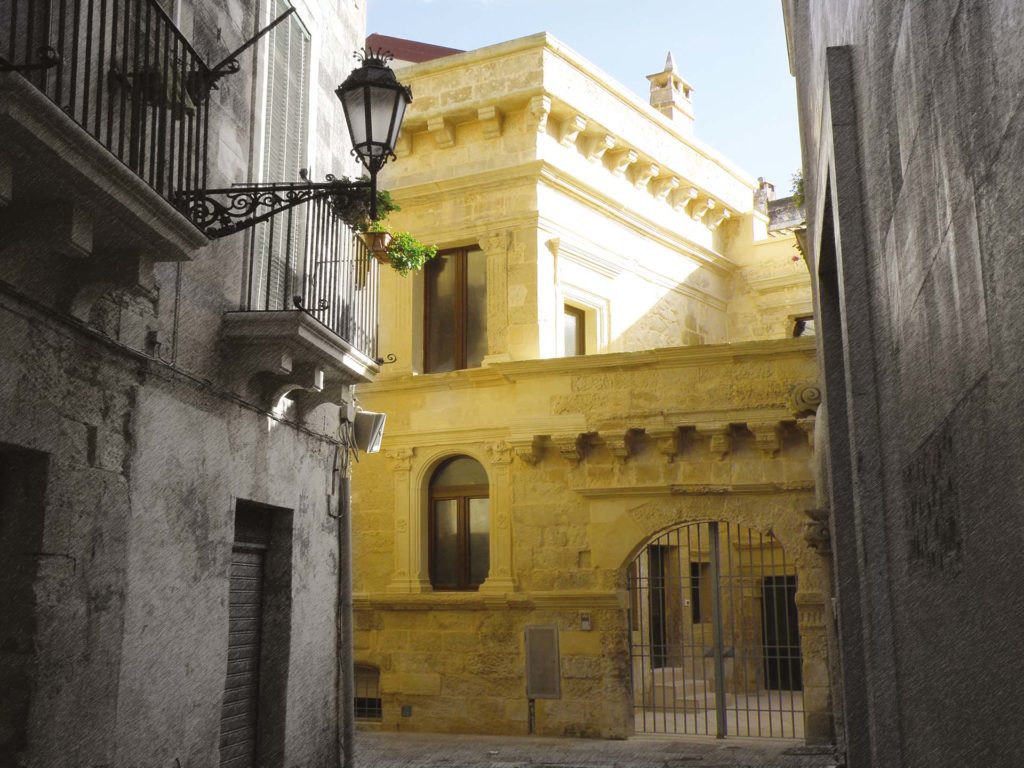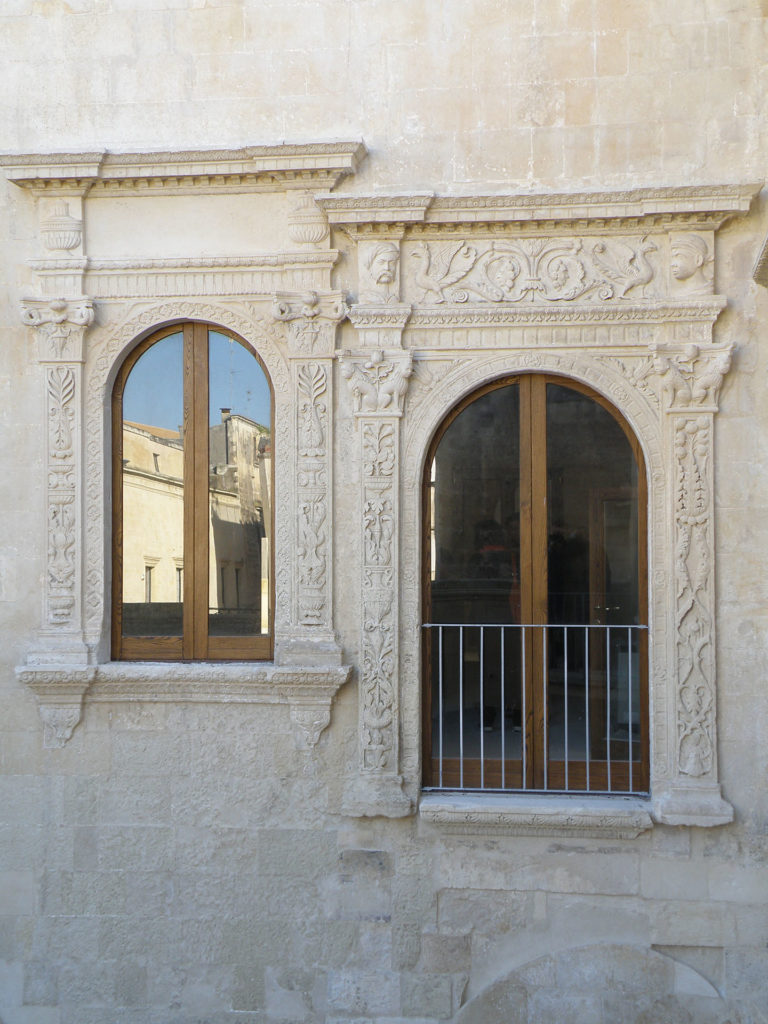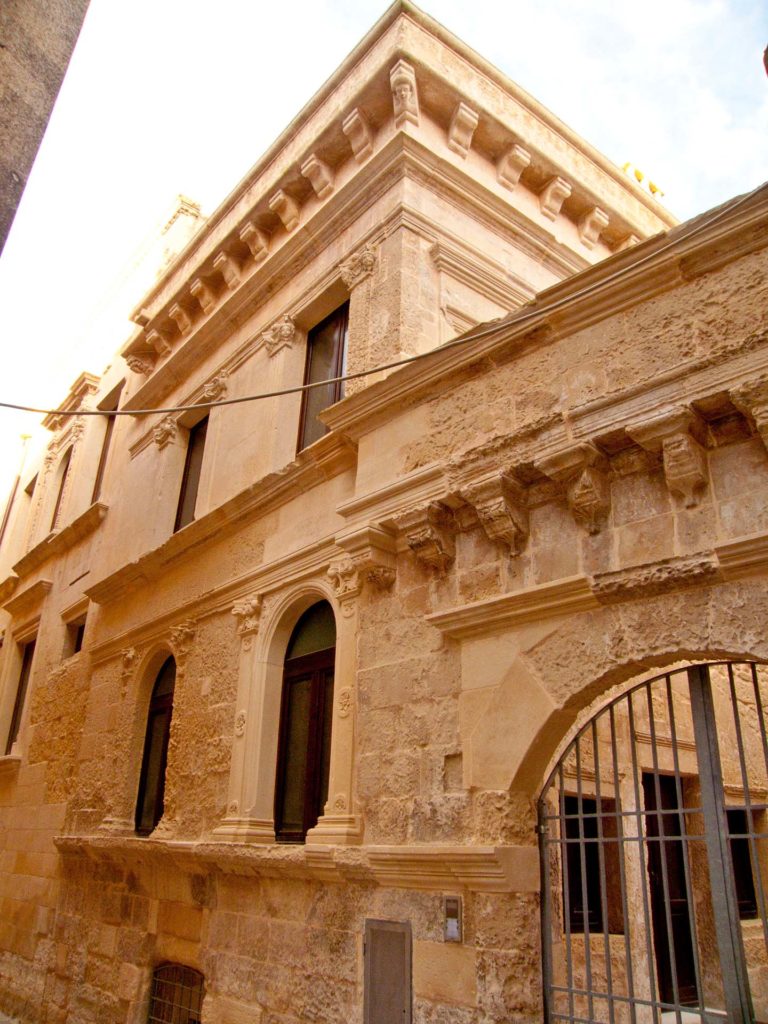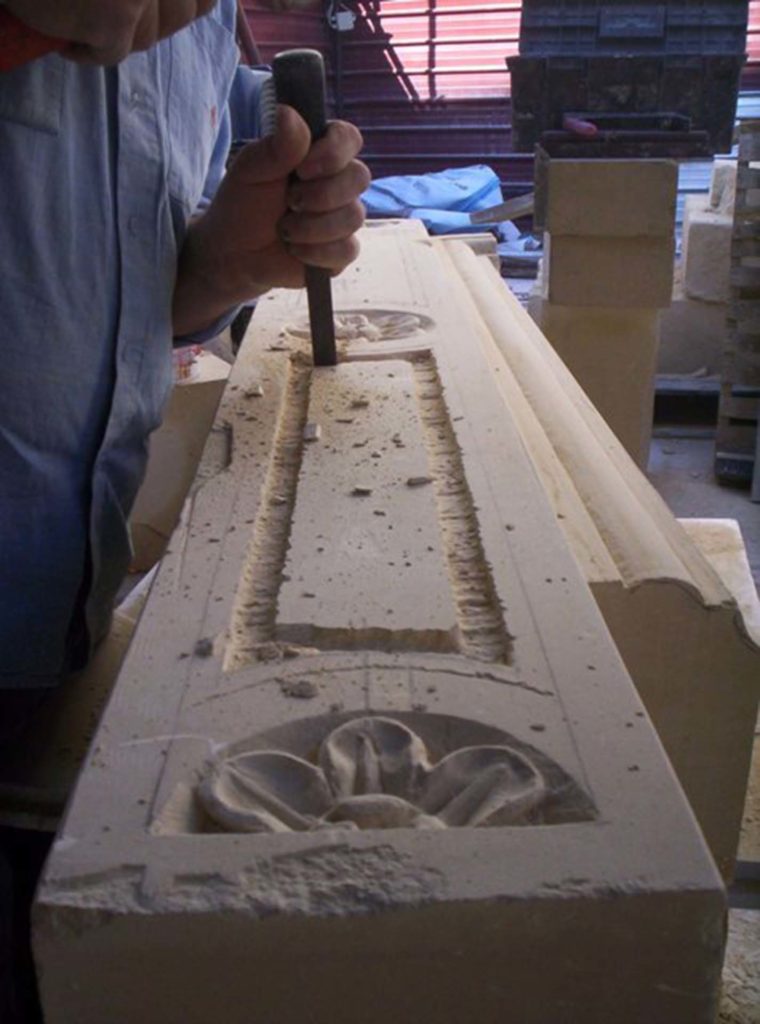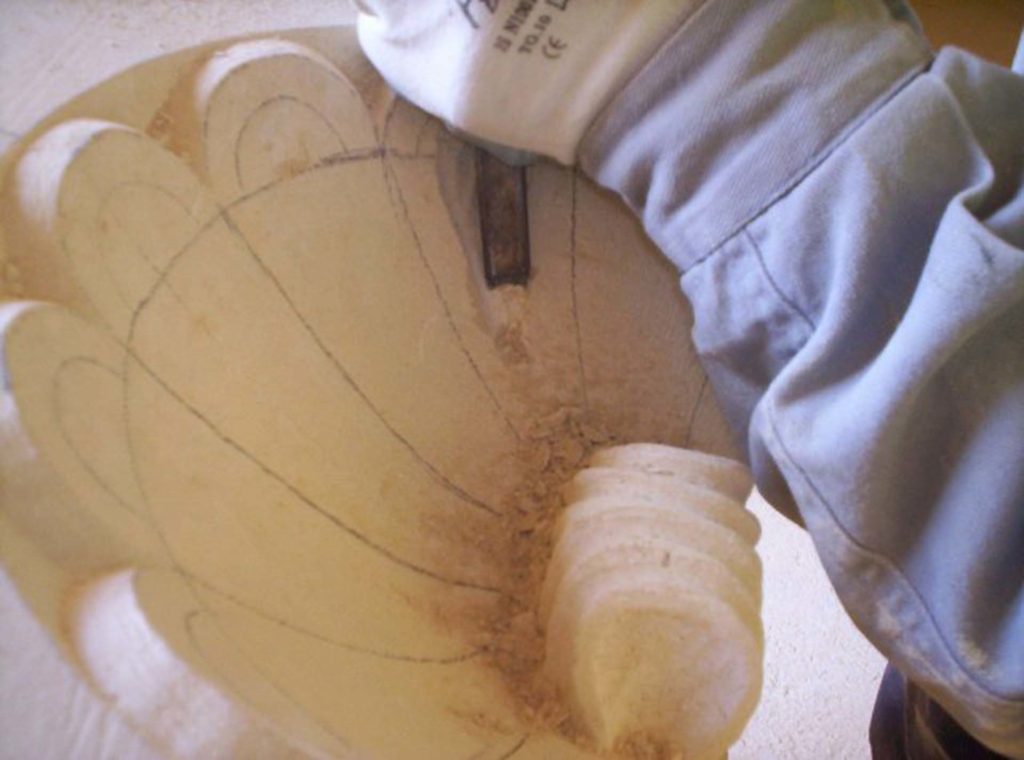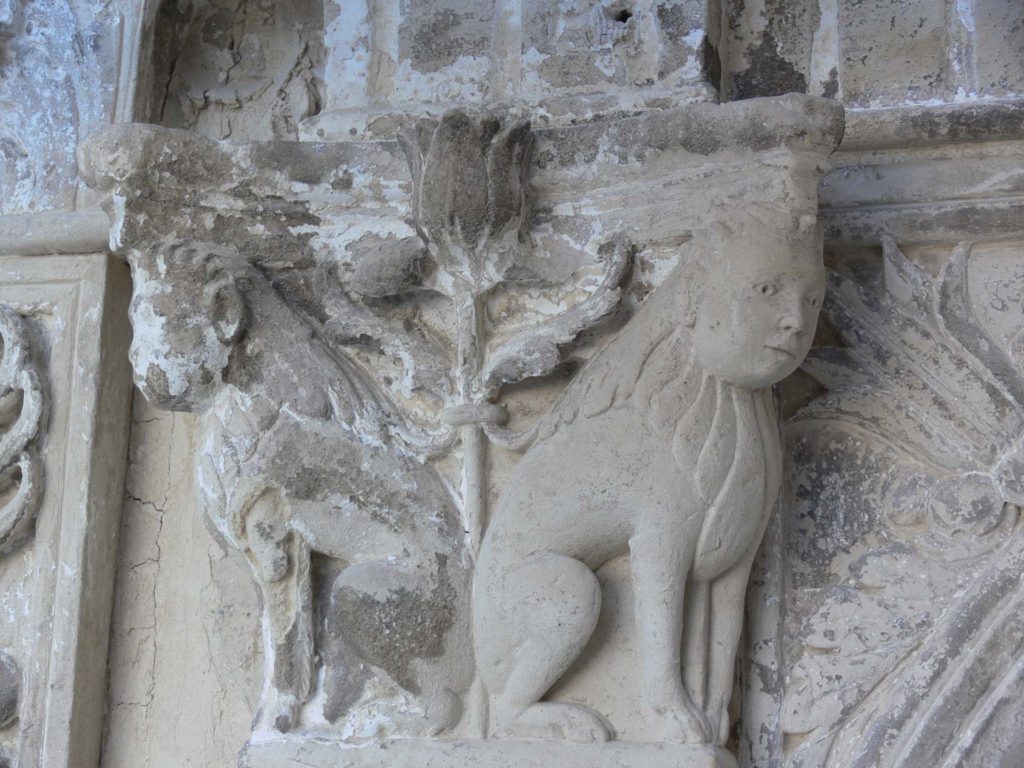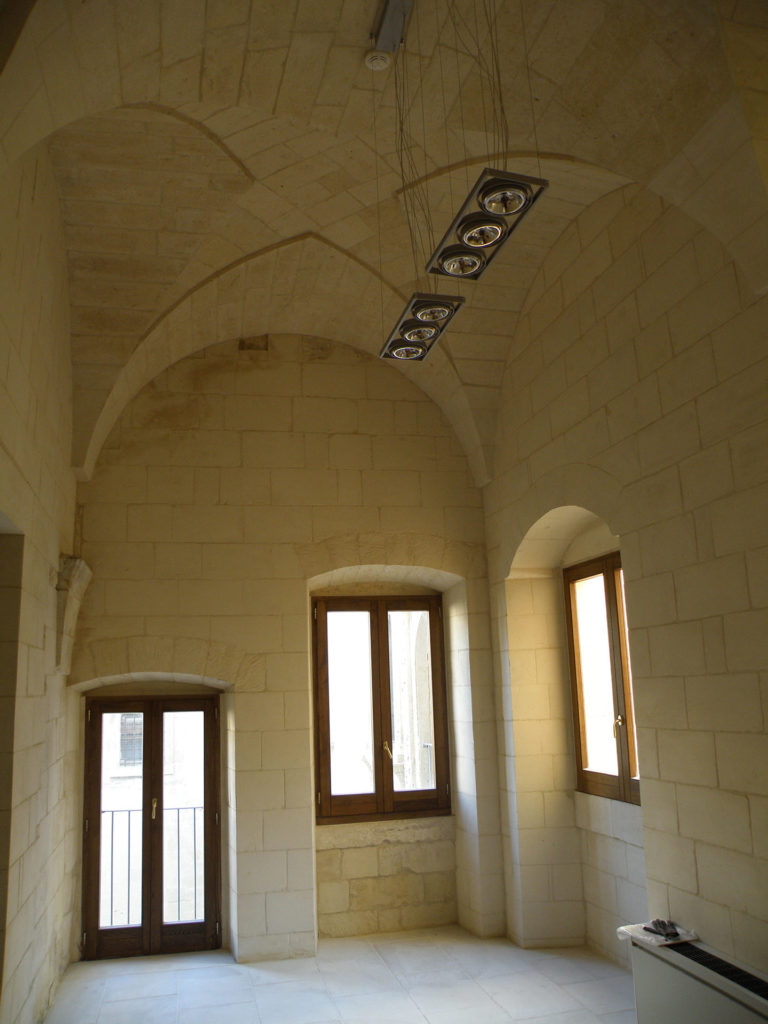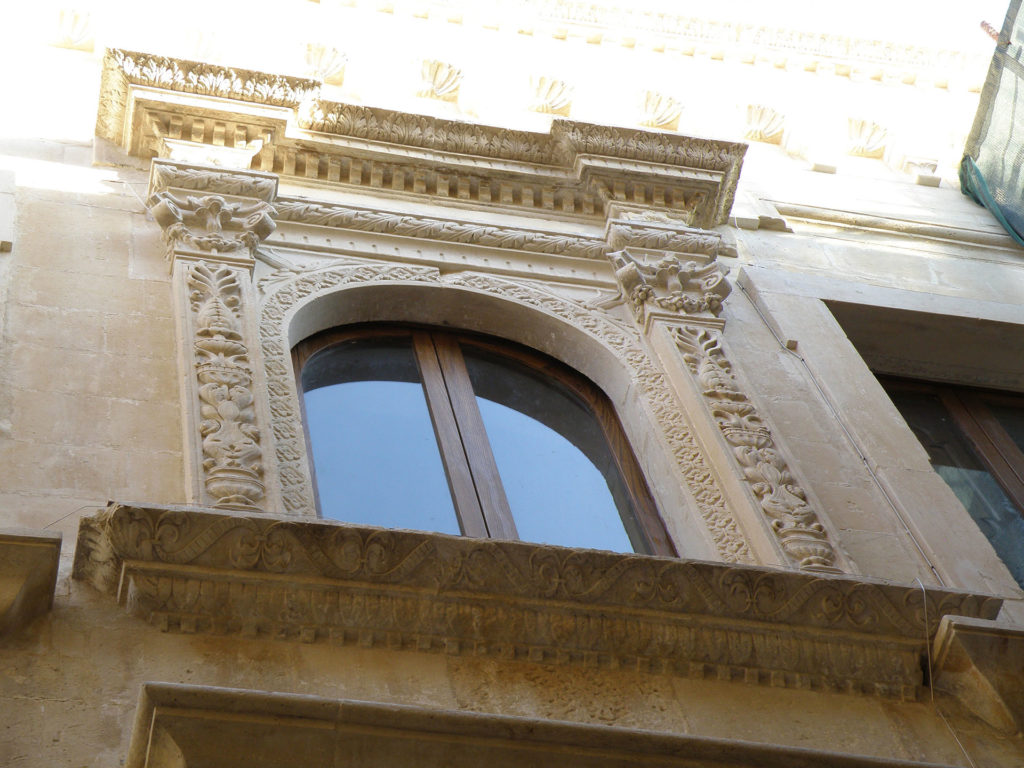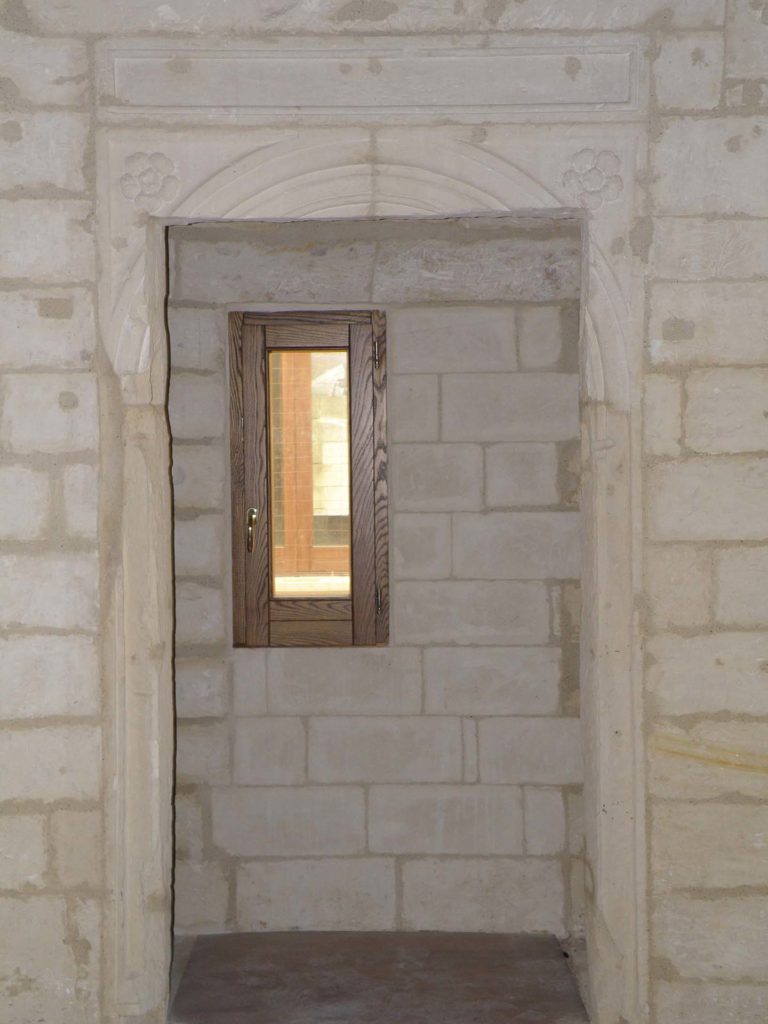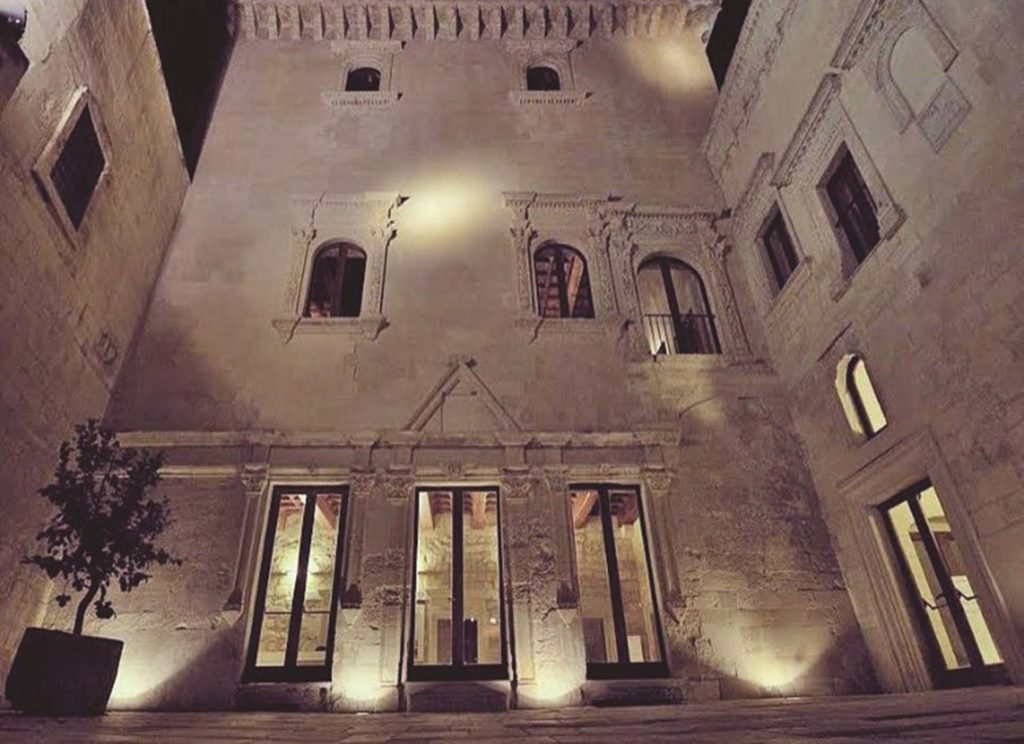Vernazza Castromediano Palace - Lecce
Palazzo Vernazza is "the oldest and most beautiful building in the city of Lecce" (C. De Giorgi). The sixteenth-century Palace is located in Vico Vernazza, near the Church of San Matteo and overlooks Piazza Pellegrino. Although the structure, as a whole, is dated in the sixteenth century, looking carefully you can see the peculiarities dating back to different periods. In the central part of the building stands a tower dating back, probably, to a more distant and medieval era, all wrapped in elements typical of a later era, which gives the work a more stately appearance, detached from the canons of the fortresses.
But the real wonder lies in the basement, which today can be accessed through a staircase: the temple of Isis. The deity, of Egyptian origin, was introduced among the worshipped cults also in Italy after the Romans conquered Egypt. For a long time the presence of this ancient temple has only been hypothesized, treasuring what was narrated in some ancient texts that told of merchants who went to Lupiae (Lecce) to bring a gift to the goddess, in exchange for fertility and motherhood, but only with the restoration works this legend has become reality. Another interesting discovery made in the bowels of Palazzo Vernazza is the Purgatorium, a pagan baptistery containing water for the purification of the body, necessary to access the Sanctuary.
The restoration work involved the structural and static consolidation of the building, carrying out work on heavily degraded masonry; A number of sensitive operations were carried out in the heavily damaged areas and the now irrecoverable fertilizers were replaced. In some cases the crowns and other architectural elements have been restored, respecting the original configuration and highlighting the new compared to the old.
Particular care has been taken towards the treatment of the internal and external wall surfaces made of Lecce stone. The structural consolidation was very demanding, since during the excavations wells and cisterns were found; the foundations of a whole part of the artifact, probably never realized, have not been found. In this regard, it was planned to install micropiles in order to support the artifact itself. Finally, the restoration ends with the construction of advanced technological systems, also given the future use of the building as a permanent center for documentation, conservation and enhancement of the Euro-Mediterranean heritage.
